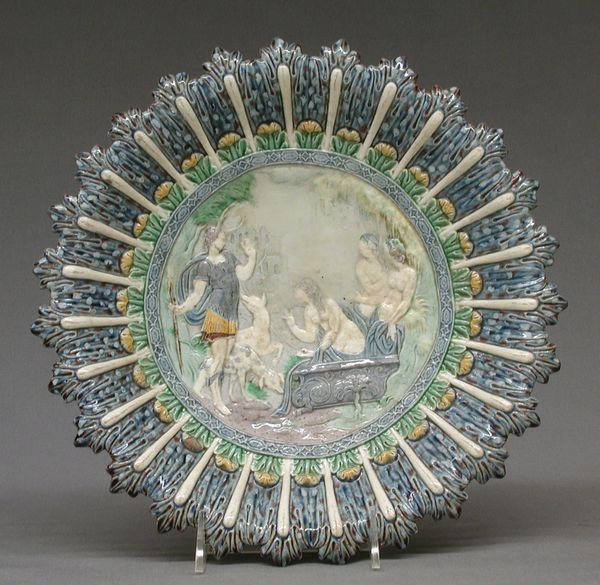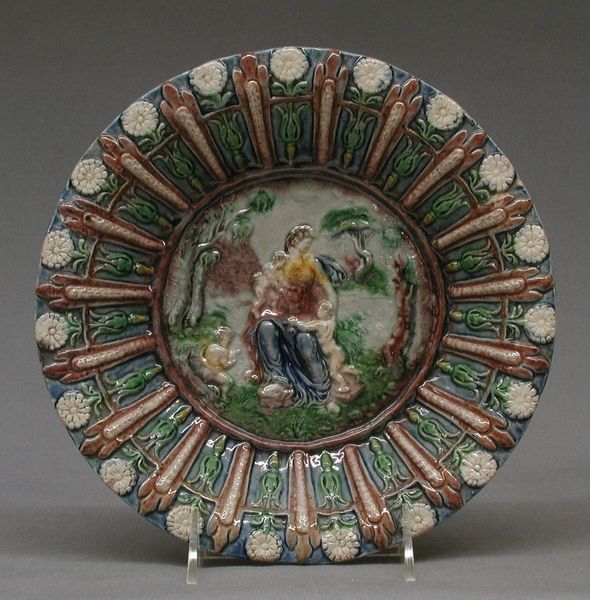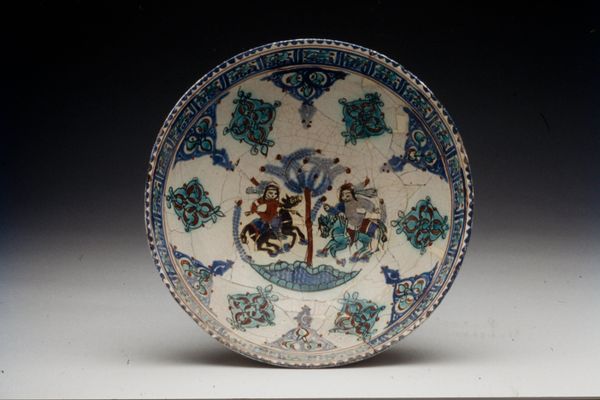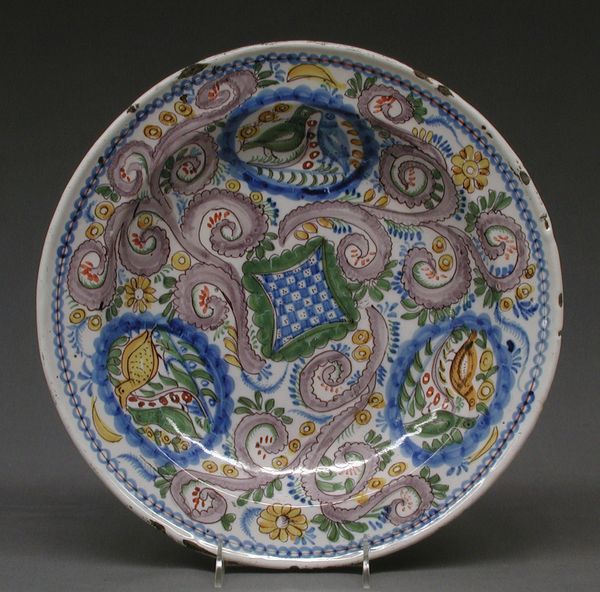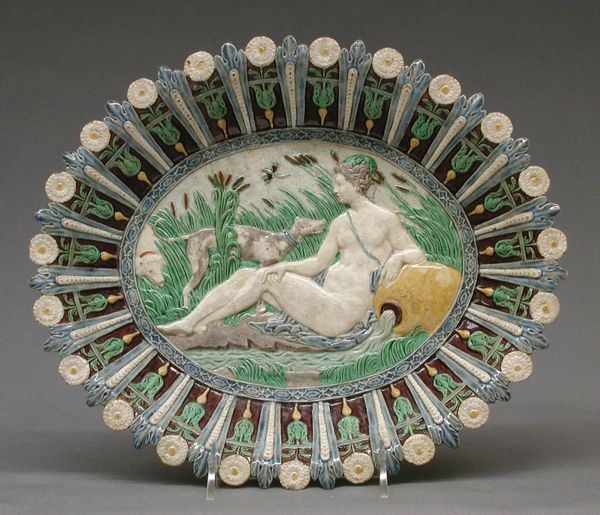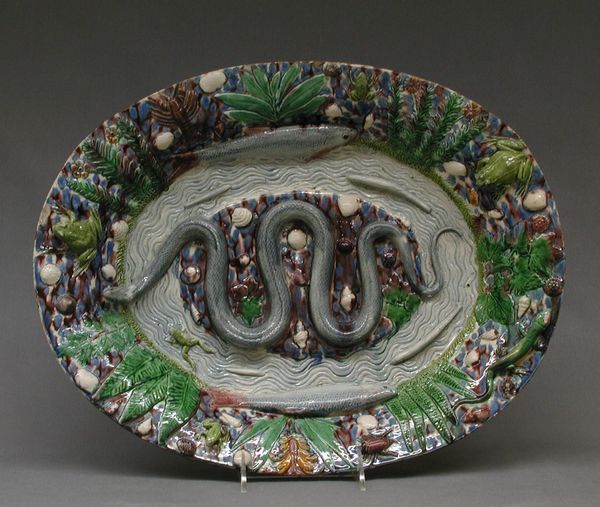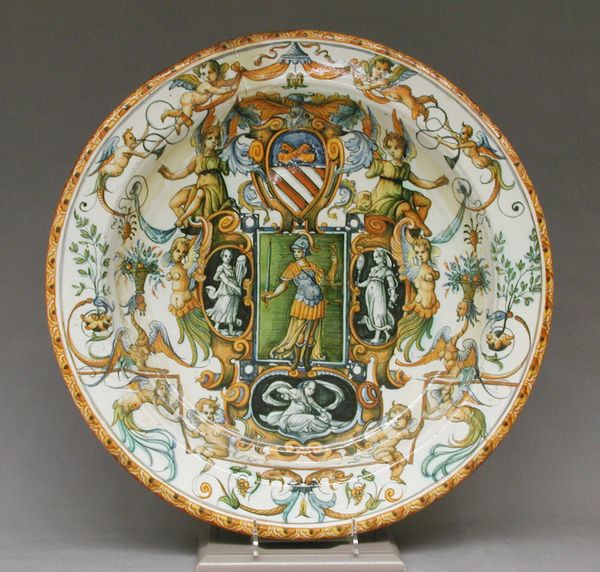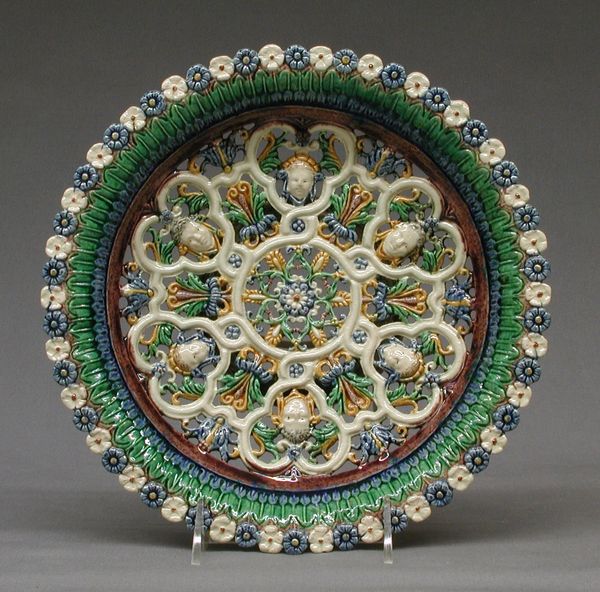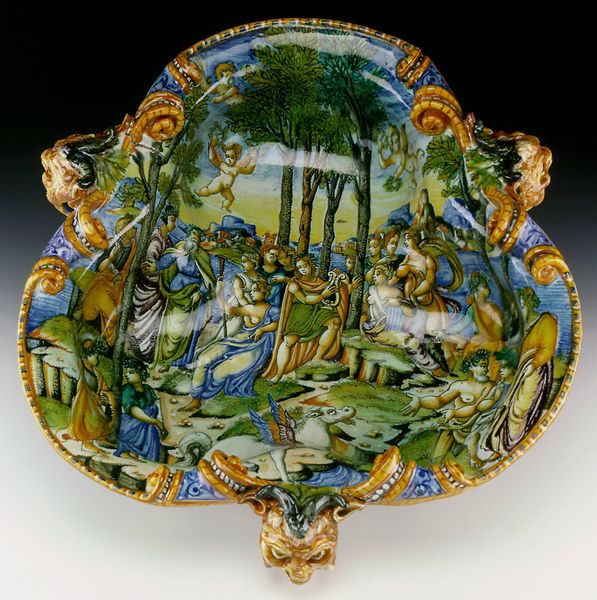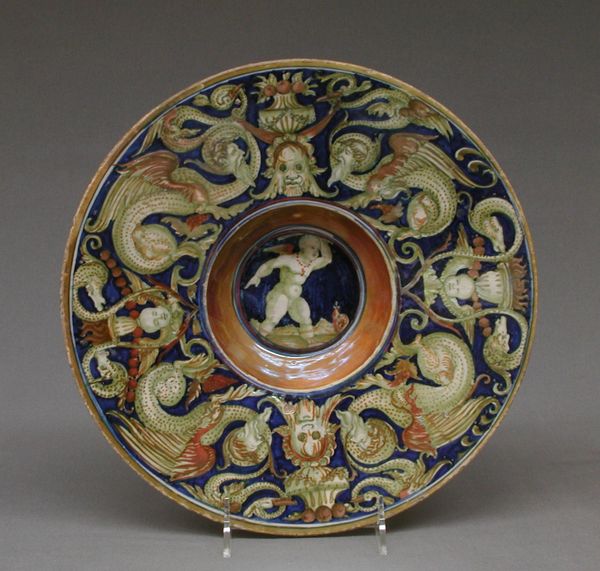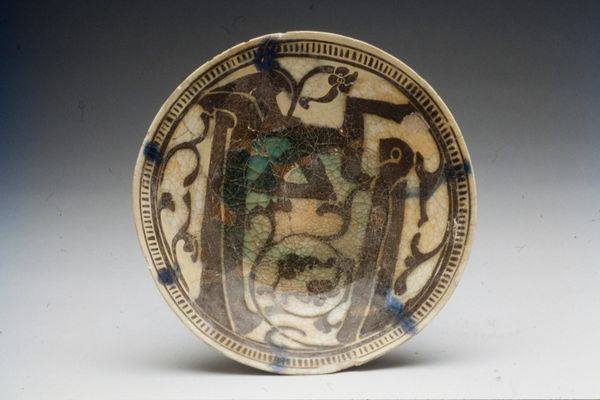
Dimensions: Overall (confirmed): 2 15/16 × 12 × 12 in. (7.5 × 30.5 × 30.5 cm)
Copyright: Public Domain
Curator: Welcome. Before us is a striking ceramic dish attributed to Bernard Palissy from the 19th century, currently held in the collection of the Metropolitan Museum of Art. It's titled "Dish with childhood of Bacchus." Editor: It's undeniably festive! The exuberance practically leaps out, especially the clustering of cherubic figures. There's a tangible sense of abundance and a somewhat decadent joy to the overall scene. Curator: Absolutely. Note the dynamism achieved through the raised relief and intricate molding. Palissy’s keen understanding of form is undeniable; he coaxes remarkable depth from what is, fundamentally, a two-dimensional plane. Editor: True, but that very dimensionality hints at something more. Consider the chosen subject: Bacchus as a child suggests a specific commentary. We might interpret it through the lens of classical narratives – the dish seemingly idealizing a time of pastoral innocence which is often tied to ideas about social hierarchies, with the lower class in agrarian bliss. The cherubs indulging in grapes signals hedonism as inherently positive. Curator: While the allegorical aspects cannot be discounted, the purely formal achievements merit attention. Observe the masterful glaze application—the subtle chromatic shifts in the foliage, the interplay of textures… the meticulous rendering draws you in, encouraging prolonged contemplation of detail and line. Editor: Yet the emphasis on surface ornamentation begs questions: What narratives are deemed worthy of such careful decoration? How does its potential commodification or exclusivity interact with representations of luxury? To present childhood of Bacchus in such a way arguably naturalizes unequal class relationships. The figures even resemble well-fed cherubs, far-removed from impoverished children of the time, perhaps pointing towards the privilege afforded by wealth. Curator: Certainly, its original reception context holds sway. But the piece still exhibits an undeniably Baroque sensibility; this impulse towards exuberant theatricality that supersedes any need for explicit narrative rigor, and in turn, foregrounds its spectacular artifice. Editor: Agreed, its artifice is striking but considering its artistic purpose within a broader socio-historical landscape is imperative, thus enriching our interpretive appreciation beyond purely aesthetic criteria. Curator: An undeniably insightful complement. It underscores the dynamism that is core to this art and in turn challenges static or conclusive definitions of "beauty" Editor: A valuable takeaway – may all viewers move forward now empowered to recognize the importance of situating each visual experience inside an historical context, which in turn deepens its resonance and power.
Comments
No comments
Be the first to comment and join the conversation on the ultimate creative platform.
